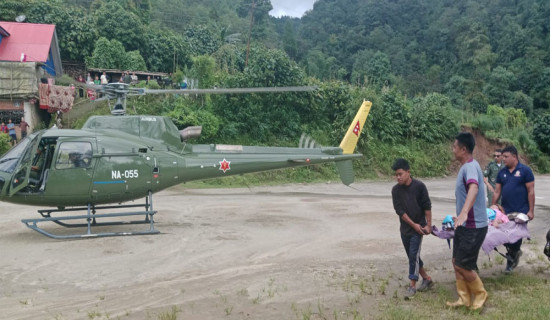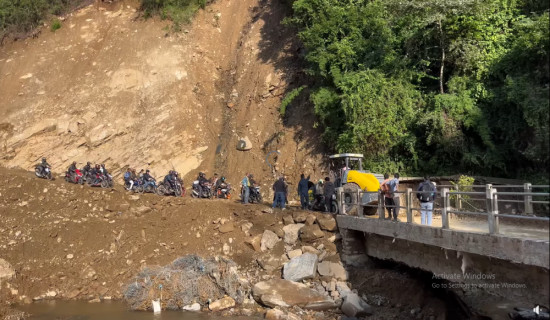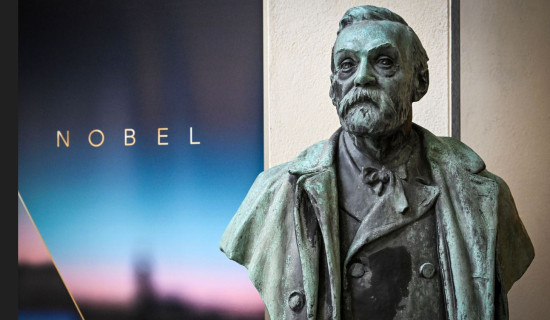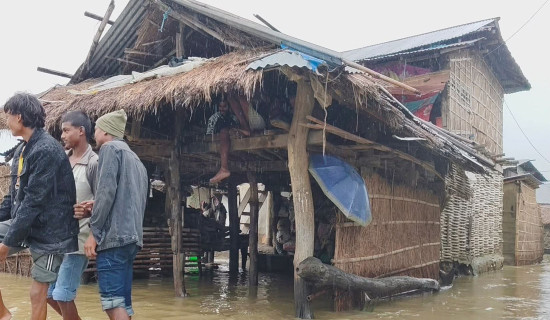- Tuesday, 7 October 2025
India For Multipronged Engagement With Neighbours
For us, a group of Nepali journalists, who were on a familiarisation visit to India in the first week of July, our itinerary was more than an exposure trip - it offered an opportunity to witness India's achievements in economy, trade, education, infrastructure, defence, science and media first-hand. Poised to be a global power, India has developed necessary institutions to realise that aspiration through public diplomacy, economic cooperation and people-to-people engagements.
It has attached greater priority to deepening the relations with immediate neighbours – Nepal and Bhutan, with whom it has been sharing social, cultural, trade and economic ties for centuries. Each institution we visited has a story to tell, but collectively they provide a broader message: India is keen to enhance relations with Nepal, not just at the government level, but also at the level of civil society, media and academic circles. Ministry of External Affairs, External Language Media Section, External Publicity and Public Diplomacy Division, New Delhi, organised the trip for Nepali and Bhutanese journalists from July 2 to 9.
Media as a bridge
An interaction with journalists at Asian News Agency (ANI), South Asia’s leading Multimedia News Agency, highlighted the media's role in building positive perceptions between the nations. In the digital era, media can act both as a bridge and a barrier in bilateral relations. The dialogue remained significant in fostering shared understanding of cross-border narratives, tackling the misinformation and sharing perceptions of the two nations. The pen-pushers from the two neighbours stressed a renewed sense of responsibility — to report fairly, engage deeply, and continue building the bridge, not acting as spoilsports.
As the fifth-largest economy, India is keen on the promotion of regional trade, cross-border investments and economic collaboration. This was echoed in the discussions with the Federation of Indian Chambers of Commerce and Industry (FICCI). Participants focused on the media's role in expanding the economic cooperation between the countries.
The visit to the Taj Mahal in Agra was exciting. Taj is an architectural wonder, a symbol of immortal love. The descendants of artisans, who made the Taj Mahal, are still giving continuity to the craft handed over to them by their ancestors. The government’s support for them to continue with the craftsmanship was praiseworthy. Rashtrapati Bhawan, the official residence of the President of India, also displays the grandeur of Indian architecture. It gives a glimpse of India’s colonial past, its struggle for independence and post-independence national pride. Spread in 320 acres of land, it was one of the most magnificent buildings. It symbolises respect, warmth and India’s openness to engaging Nepal at the highest level.
Delhi’s green drive
The greenery of Delhi held me spellbound. From the window of my hotel room, I literally could only see the lush green forest, leaving a profound impression on me. Despite being one of the most urbanised cities in India, Delhi was able to maintain relatively large green cover, which most megacities lack. Parks, gardens, forested areas and the tree-lined roads added to the aesthetic value of the city.
According to a report, the tree cover in Delhi increased to 25 per cent in 2024. It has provided much-needed cushion against heat and pollution. When our cities are turning into a concrete jungle, Delhi’s green drive can be replicated in Nepal. Kathmandu, Bharatpur, Pokhara, Itahari and Birjung follow suit to combat the rising pollution and increasing temperature.
India has made strides in the education sector. Over the years, the government has made policy reforms and invested in infrastructure aimed at making education a global standard. Women have climbed up the leadership rung in many academic institutions. Similarly, the works of the Coalition for Disaster Resilient Infrastructure (CDRI) enable us to understand the need for regional cooperation in disaster preparedness and building disaster-resilient infrastructure. Nepal, being a mountainous country and lying on the junction of tectonic plates, is prone to earthquakes and rapid melting of glaciers has led to the glacial lake outburst, causing a huge loss of life and property. India’s experiences and success in disaster risk reduction in South Asia are worth emulating.
The trip of our delegation to Doordarshan made us understand how state-owned media can remain credible and relevant in the digital age as well. India’s flagship public television channel is known for its credible news and views. The visit encouraged constructive and informed media coverage about India in Nepal. A visit to Vidhan Sabha (State Assembly) in Uttar Pradesh gave a fresh perspective on the democratic process and governance model in India’s biggest state.
In coming August 23, India is celebrating the second anniversary of Chandrayaan-3 touching the surface of the moon. Producing aircraft like Tejas Light Combat Aircraft, Dhrub helicopters, showed India’s indigenous defence capabilities, thanks to Hindustan Aeronautics Limited (HAL), devoted to realising India’s soaring space ambition.
India and Nepal share deep-rooted social, cultural and religious ties. Nepal and India share an open border, allowing the citizens of both countries to move into each other’s lands freely. India is Nepal’s biggest trade partner, and more than two-thirds of Nepal’s trade is with India alone. India has hugely contributed to boosting Nepal’s economy, trade, education, culture and tourism, among others.
Spiritual bond
There is a huge prospect of enhancing the cultural and religious bond between the people of the two nations. Against this backdrop, the Greater Lumbini Buddhist Circuit (GLBC), one of the world’s holiest pilgrimages and spiritual destinations, serves as the spiritual and cultural pilgrimage route of the two neighbouring nations. It covers the Buddhist sites in Nepal and India, including Lumbini, the birthplace of Gautam Buddha, which is included in the UNESCO World Heritage Site.
This circuit needs to be promoted as it holds deep spiritual value for Buddhists around the world and promotes religious tourism. Lumbini, Pashupatinath and Muktinath serve as the cultural bridge for the two nations. Both nations have a larger number of Hindu and Buddhist devotees, who revere these religious sites and embrace the spiritual values as part of their lives.
Likewise, Bodhgaya, where Buddha received enlightenment, is the sacred site for Hindus and Buddhists of both countries. Many Hindu pilgrims from Nepal visit Badrinath and Kedarnath in India. Increased religious tourism helps in strengthening bilateral ties through the cultural link and diplomacy, while spurring the local economy and hospitality business.
(Adhikari is a journalist at The Rising Nepal.)

















